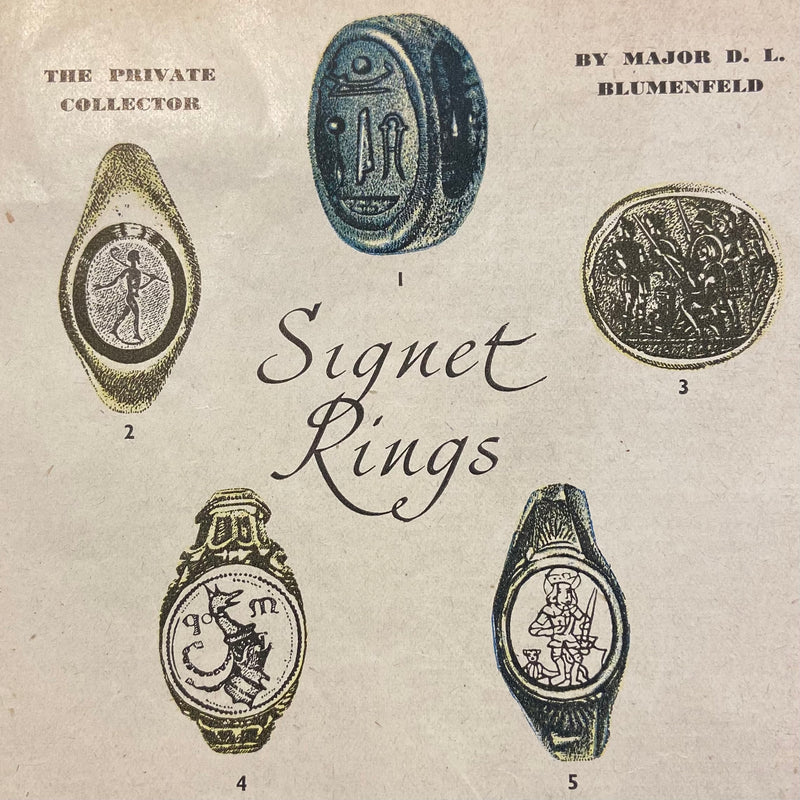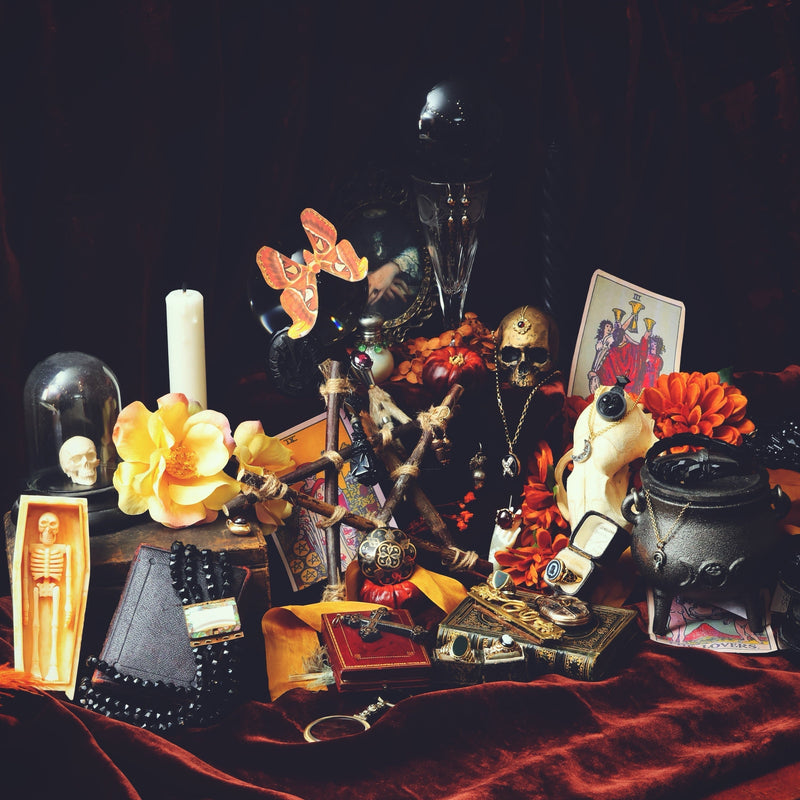
With fashion articles recently in the like of Vogue, it seems the wearing of a signet ring is undergoing a bit of a revival and has become fashionable again, particularly among young people looking for something unusual from the past to reference and accessorise their ‘look’. Here we have a quick peek at the history of the signet ring through this article by Major D L Blumenfeld published in The Reader's Digest in the early 1960's.
HISTORY
The origins of the signet ring date back to as long ago as 3500 BC when cylindrical seals were used in Mesopotamia as a mark of authenticity. The ancient Egyptians attached the seal to a ring, and Pharaohs and important dignitaries would wear them as a sign of their authority. During the Minoan period most signet rings were made of soft stones or ivory, but by 1500 BC they were created from harder stones, and with the advent of the Bronze Age, the rings started to be made in metal, and become recognisable as the signet rings we know today.
If you'd like to see historic and ancient signet rings in museum collections.... Ashmolean Museum in Oxford, The British Museum and The Victoria & Albert Museum. Image below of a Roman ring in the British Museum Collection.

The Greeks, the Cretans and later the Romans began to produce beautiful examples for rich and poor alike. Among the Greeks, signets were worn by nearly everyone, so much so that in Sparta a law was passed forbidding any metal more valuable than iron being used in their manufacture. But in other parts of Greece there was no restriction, and precious and semi-precious stones – Sards, Chalcedonies, Onyx, Agate, Sapphire, Amethyst, Emerald and many others – were used in conjunction with gold and silver to make signets and portrait intaglios. Many of these were exported to Rome, and largely copied in that city.
In the early days of the Roman Republic the citizens appear to have copied the simplicity of the Spartans, for the bulk of the population wore only iron rings, and even these were forbidden to slaves. Later, laws were made governing the wearing of rings used as seals; the Emperor Tiberius issued various edicts affecting gold ring wearing, Severus granting the right to all Roman soldiers.

When Rome was fully under the influence of Greek art, the most wealthy and famous of her sons sometimes presented whole cabinets of engraved gems and signets to the Temples as votive offerings. From these the priests made glass paste casts which they sold to the poorer people, who mounted them as rings. Some of these were remounted in Georgian times, when there was a collecting craze for classical gems and paste.
From the second century AD down to the Middle Ages there is a dearth of rings of all sorts. Early British and Saxon are rare, heavy and in most cases unsuitable to wear. But in the 14th century the signet became of real importance in religious, political, legal and private matters. Great episcopal rings were solemnly conferred on appointed bishops, papal rings were given by Popes to newly made cardinals. The fashion spread to knights, squires and even men at arms.

By the Middle Ages, all the nobility and anyone of any influence had a signet ring, and they were used to sign and verify all legal documents. Edward II decreed that all official documents must be signed with the King’s signet ring. Sadly, the majority of signet rings from this period were destroyed to avoid them being used fraudulently after the owner’s demise. Having a signet ring in this period of history marked you out as of noble birth, or a member of the highest class of society. Image right, a signet engraved with a Lion Passant and motto, 15th century Medieval at The British Museum.
It is not until the 16th century that the signet ring with crest of coat of arms – the popular idea of the signet ring – became universally fashionable. From this time onwards it retained a more or less standard form. It was usually plain gold, with the crest or coat of arms, or badge or cypher, deeply incised in order to make a good seal impression. Signet rings are carved 'Intaglio': either into the metal of the ring, which is normally Gold or Silver, or into an inset stone .

About this time, too, signets engraved with badges or marks or initial cyphers were worn by merchants and guildsmen, not only as seals, but for use by trusted bearers as proof of identity when collecting bills for their masters. People not entitled to a coat of arms used massive rings in gold and silver with their initials cut into the bezel, with a knot of flowers or foliage entwining the letters. The most practical signet rings of the time had a rotating bezel, which allowed the wearer to rotate the seal towards his finger when not being used.
Traditionally, men would wear the signet ring on the little finger of the left hand, but in Victorian times, the first, second or third fingers were more popularly used. In an age when a man could wear more than one ring without it being considered OTT, a fine signet might accompany a diamond solitaire, for example.
METAL SIGNETS
The greater proportion of signets for both men and women were made simply of Silver or Gold. These could be engraved to display initials or mottoes, family crests or symbolic personal designs. Very popular in the 19th century, the rings became ornate with elaborate shaping and hand engraving to the metal which can be seen in the surviving examples we have seen. If you'd like to create a personal piece for yourself or as a gift we recommend 'Fairburn's book of the Crests of the families of Great Britain and Ireland' which is a brilliant source of information and has many of the known mottoes, crests and symbols of families in Britain and Ireland.
STONE SIGNETS

See our collection here. If you'd like to personalise your ring, we have an amazing and skilled traditional hand engraver who can carve your initials, crest or monogram into Gold, or Silver and also a traditional stone carver who can carve these into your stone signet.



